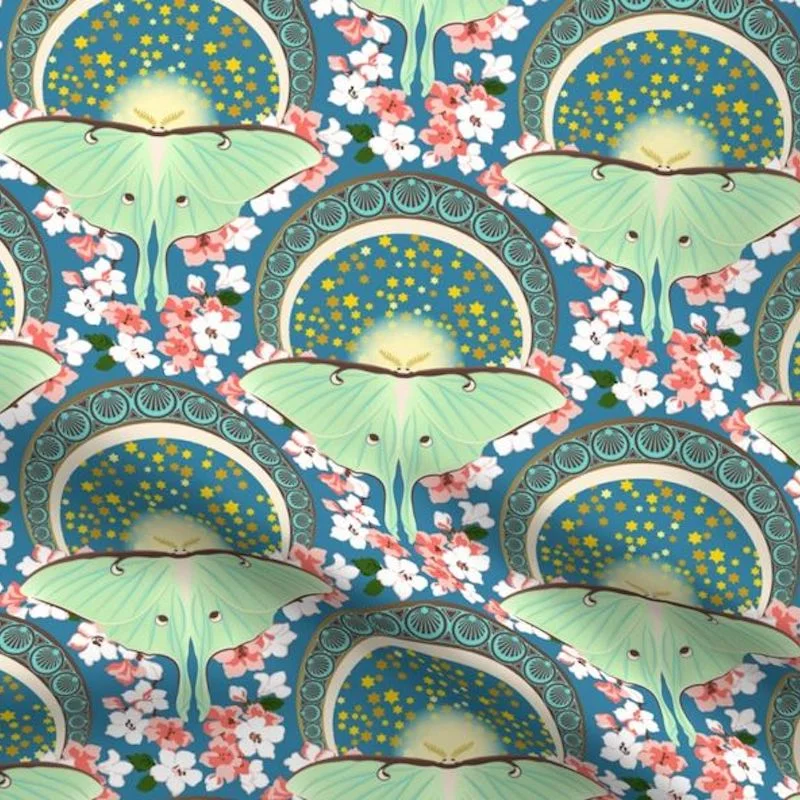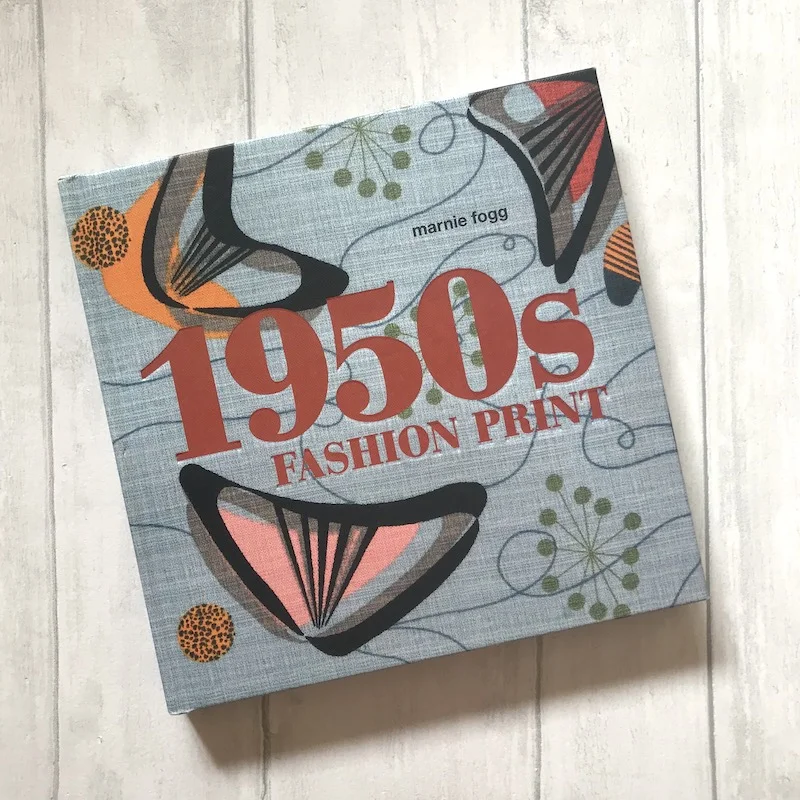The digital fabric printing industry has grown considerably over recent years, and there are now a number of players on the market. I’ve been promising a series of reviews of some of the options out there (particularly UK/EU-based services), and I’m finally ready to start sharing the results! First up is Fashion Formula. This is a UK-based service offering a wide range of fabric and paper options for printing.
New Fabric Collection: Luna
I’m excited to introduce my newest fabric design collection, Luna! An Art Nouveau-influenced collection, Luna draws its key inspirations from the work of Alphonse Mucha.
{Fabric of Time: Rayon} Part 3: A Versatile Fibre
{Bookshelf} Feed Sacks: The Colourful History of a Frugal Fabric
New fabric design: Butterfly Mail
Here’s my entry to this week’s limited colour palette Spoonflower design challenge. As a lifelong collector of ephemera and philately, the travel-themed novelty prints of the 1950s featuring stamps and luggage labels have always appealed to me. My aim was to create a design that would call back to those original 1950s prints.
Bird-o-Rama Fabric Collection
New fabric design: St Tropez
I’m pleased to reveal one of my newest fabric designs, and my entry to the current “Bird’s Eye View” Spoonflower Weekly Design Challenge. I’ve named it St. Tropez, and it’s available now in my Spoonflower shop.
{Fabric of Time: Rayon} Part 2: What's in a Name?
{Fabric of Time: Rayon} Part 1: Early Development
{Bookshelf} 1950s Fashion Print by Marnie Fogg
I can't get enough of vintage novelty "printspiration"; my Pinterest boards are full of novelty designs from the 1940s and 50s - atomic-inspired designs, conversational prints and abstracted florals. What's great about this book is that it puts 1950s fashion textile design in context. The introduction explains the social and artistic influences of the post-war era, including the 1951 Festival of Britain and modern innovations in production processes such as the introduction of an automatic screen printing process in 1957.
The book is arranged into five sections: Abstraction; Narrative, Novelty & The Jive; Artistic Licence; Kinetic; Domestic. Images include reproduced print adverts and sample cards from textile manufacturers as well as full-page prints of fabrics themselves. Each chapter provides additional social context for motifs, style and application, along with commentary and designer/manufacturer details and technical specifications for sampled designs.


















